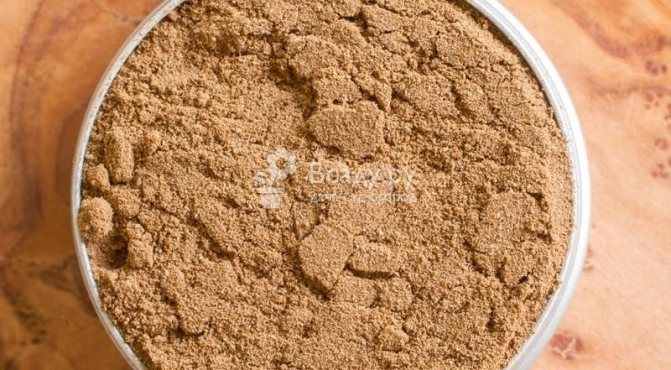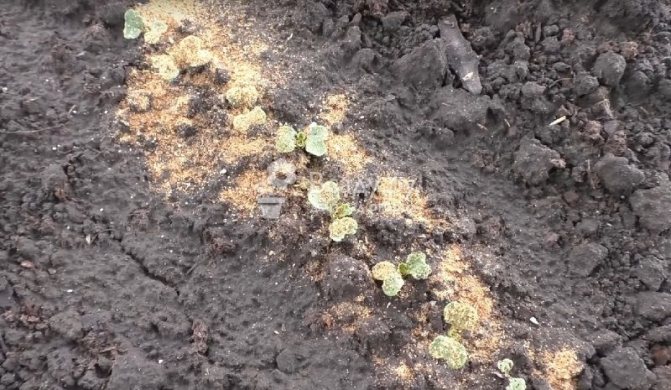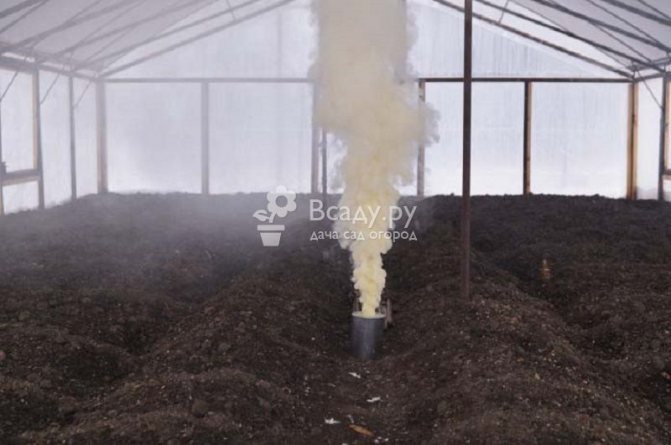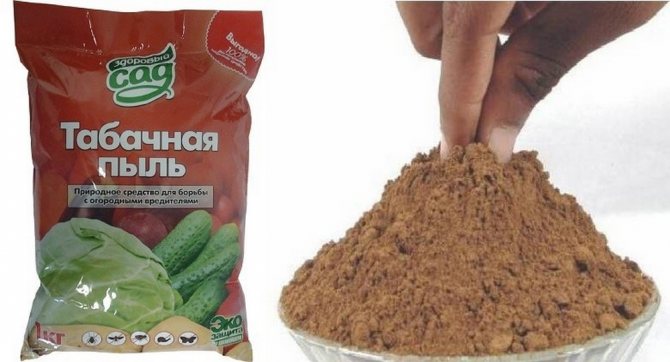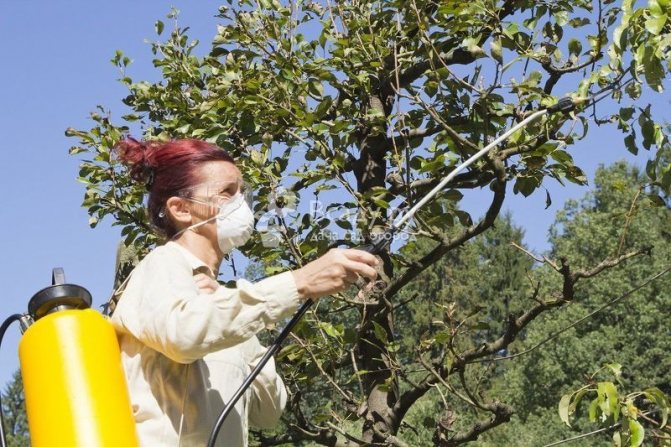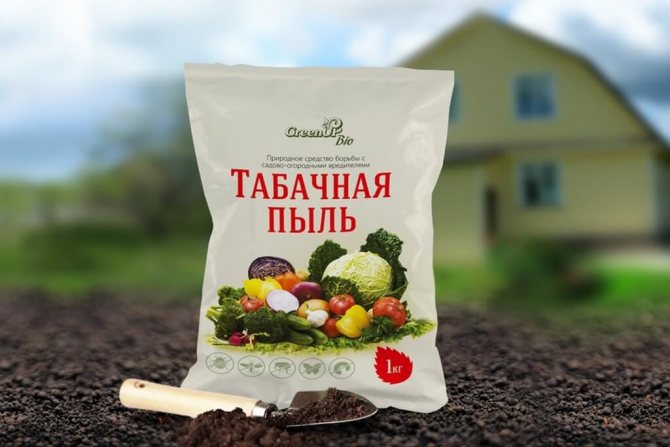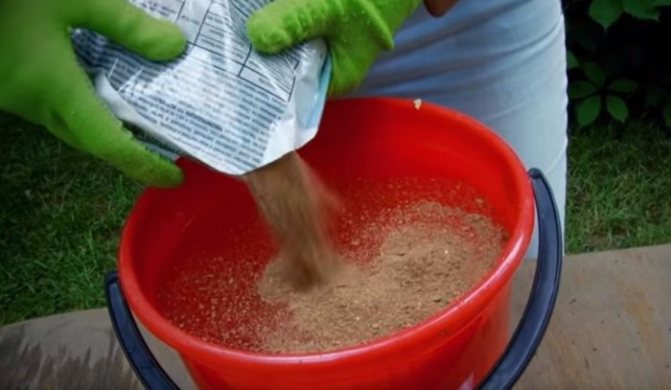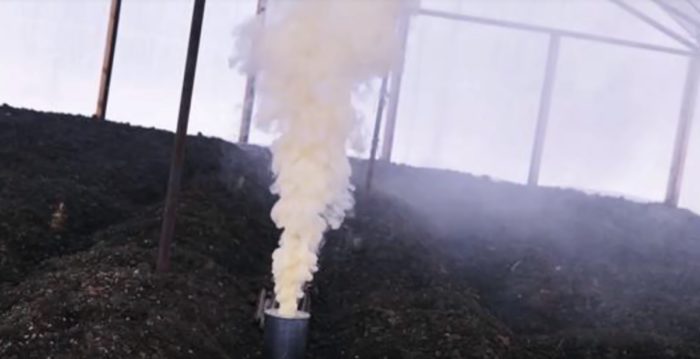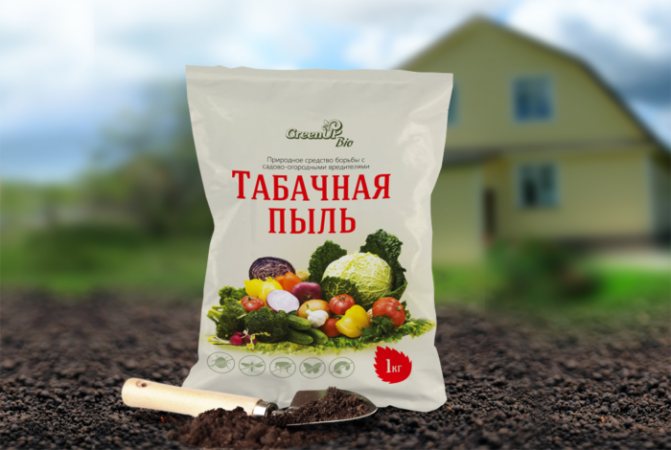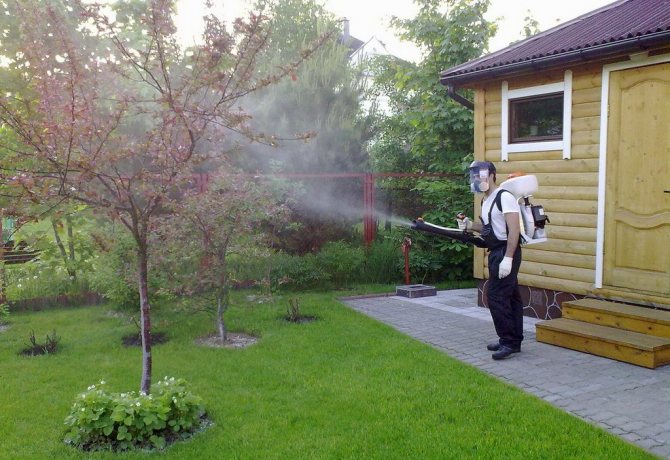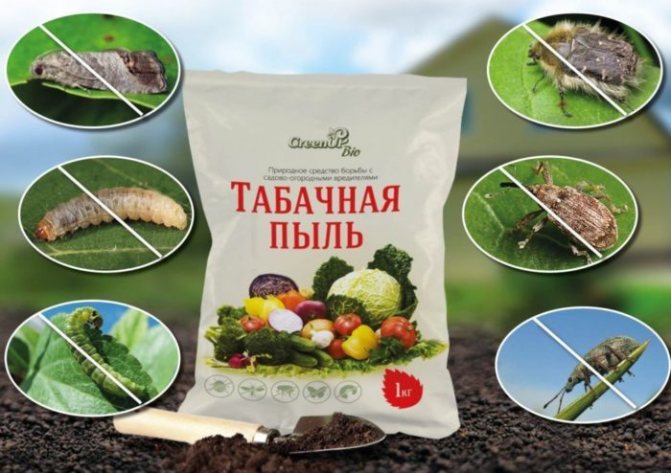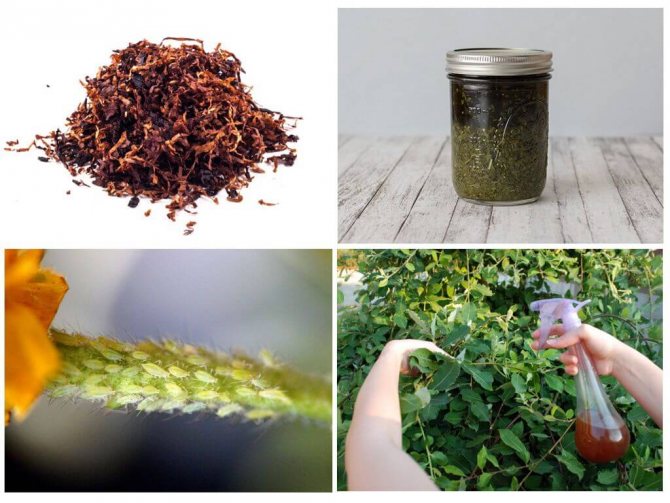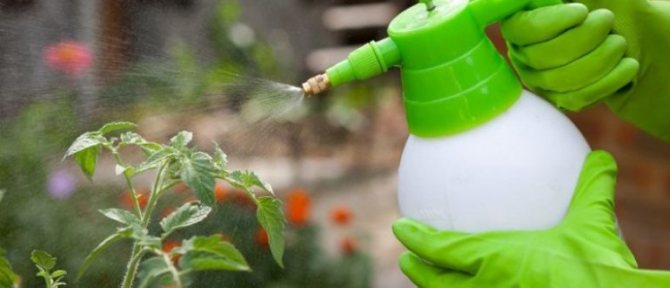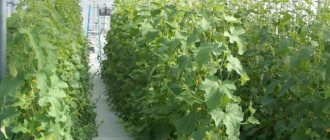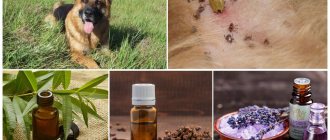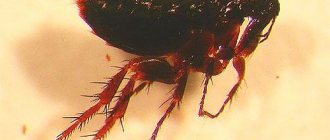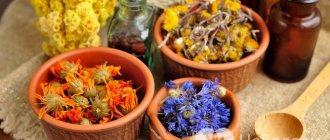The first enemies in the garden are pests. If fungal diseases and other diseases do not always affect the plant, then it is impossible to avoid collisions with insects in the open field. The search for substances that can fully eliminate the threat is difficult, but possible.
And if the drug or substance is of organic origin, and in addition serves as a fertilizer, then there is no price for the product. Gardeners suggest using a versatile substance. This is tobacco dust.
The popularity of the product is growing daily, not only due to its low cost, but also due to its ease of use, quality and high performance.
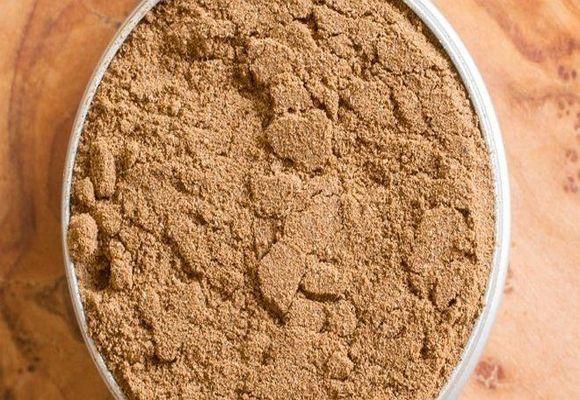
Composition and release forms
What is tobacco dust. This is a waste that appears during the manufacture of tobacco products. If you study the chemical composition, you can understand why they began to use this tool for fumigating rooms, gardens and land.
Indeed, in the composition of tobacco there are many oils, substances, trace elements that can help in growing crops:
- nitrogen;
- magnesium;
- potassium.
You can add that trace elements help to replenish the necessary supply of vitamins and minerals in the soil for plant nutrition. At the same time, they negatively affect parasitic insects, do not have the ability to accumulate in the soil in the form of heavy metals.
An additional advantage of tobacco dust is the absence of weed seeds and harmful plants, which is found in other organic fertilizer formulations.
Tobacco dust is sold in agricultural stores. Has the appearance of a powder. That is convenient both for spraying and for application in a dry form in the process of digging the soil. There is a method of preparing various infusions that also help protect plants from parasites.
You can buy tobacco dust in the form of crumbs. This type of fertilizer is recommended for application before wintering, preparation of decoctions, fumigation of greenhouses and other premises for growing plants.
If a liquid form of the dust is offered, it is classified as a home brew. In other words, the powder was bought and a concentrated mixture was created for easy dilution in water. Rarely, but smoke bombs may be offered. This form is convenient for fumigation of premises for agricultural products, greenhouses, greenhouses.
The volume of the sold funds is different. Standard: a mixture of tobacco dust with lime. Components 1 to 1. Also offered:
- a mixture of tobacco and tobacco dust;
- Tabazol (a prophylactic drug, the composition includes ash and slaked lime);
- Tabagor (analogue of tabazol with the addition of white mustard);
- Actellik (complex drug);
- Fitoverm (complex preparation).
Need to know! If necessary, you can always create tobacco dust yourself. When doing this, add lime or ash. The formula for creating a product is simple: combine 2-3 components in equal proportions. But complex preparations include more ingredients. Therefore, it is better to purchase them in stores.
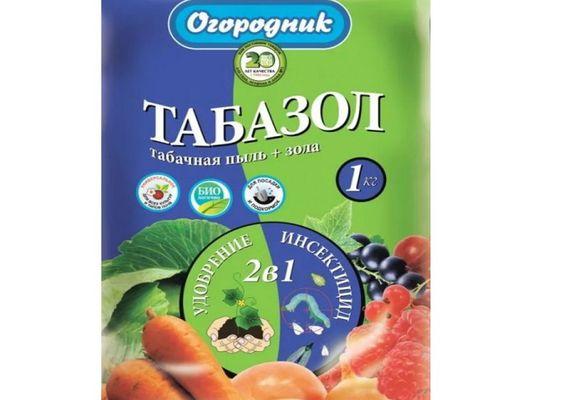

How to use the drug correctly in your garden
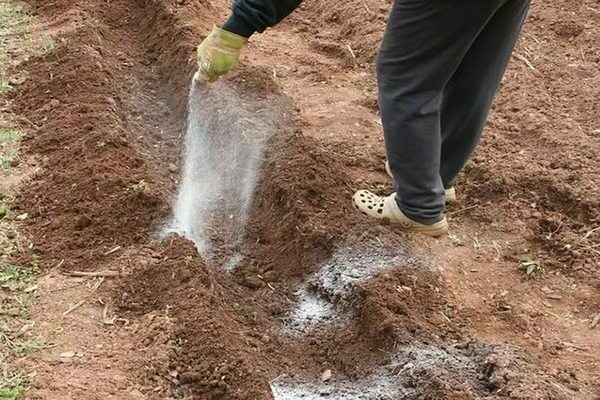

If you want to apply tobacco dust in your garden with the purpose of repelling peststhen it is best to use smoke.
To do this, you need to place straw under the tree. It should be slightly damp. It is necessary to pour tobacco dust on top and set it on fire. Burning should last for about a couple of hours.If there are crops in the garden that are in a blooming state at the time of smoke treatment, then this method of pest control is temporarily contraindicated.
This is due to the fact that such smoke has a deterrent effect on pollinating insects. There is another way you can smoke your garden crops. To do this, you need some old container, such as a bucket, and a brazier is also suitable.
It is necessary to put firewood in the selected container. Wood shavings or bark are suitable for these purposes. The flame should flare up a little, and then pour tobacco dust on top. This procedure takes from half an hour to two hours.
Do not forget that tobacco dust is a good tool as fertilizing the soil... Another plus is the fact that such feeding is natural and absolutely safe. Tobacco dust contains many useful elements that play a very important role in the growth and development of any garden and horticultural culture.
Tobacco dust contains a sufficient amount of potassium, phosphorus, and nitrogen. This remedy is often used to flavor the soil where the flowers grow. This remedy has a beneficial effect on various shrubs, as well as on vegetable crops.
Typically, about one hundred grams of dry powder tobacco dust is used for these purposes. This amount will be enough for one square meter of area. For those who like to grow plants at home. Also, a fertilizer based on tobacco dust can be a good help.
This remedy is especially good during transplanting a houseplant. To do this, during watering, a solution of tobacco dust powder is used in a ratio of one to ten.
Tobacco dust from pests
Due to the fact that tobacco is classified as a poison, it is actively used as an insecticide (for dressing pests). But tobacco dust works selectively from pests. Hence the need to know exactly which pest to spoil the culture.
For etching, not a pure substance is used, but with the addition of lime or ash. The high efficacy of the drug has been proven in the elimination of cruciferous parasites, jumping bug and cabbage fly. The dry mixture and its instructions for use more clearly describe the necessary actions for this event:
- combine 4 components (tobacco dust, phosphorite flour, wood ash, slaked lime) in equal proportions (take 3 parts of dust);
- mix well until smooth;
- method of application - pollination;
- the process begins in the morning.
You can also use Tabazol instead of tobacco dust. You will need to change the ratio of the drug: add 2 parts of tabazol. It takes 20 g of the mixture per square meter.
We save plants with tobacco infusion
Leaf-gnawing and sucking insects (aphids, thrips, caterpillars) are handled with the help of infusions and decoctions of tobacco. Decoctions and infusions are prepared in the same proportions: a liter of water is taken for half a glass of tobacco dust. For the broth, the mixture is boiled for half an hour, adding water to the original volume in the process, and then insisted in a dark place for a day.
For infusion, the tobacco is poured with hot water and kept for 2 - 3 days, stirring occasionally. Strain the broth or infusion immediately before spraying, dilute with two liters of water, add soap shavings, shampoo or green soap. And - plentifully sprayed areas affected by harmful insects. An important condition: you can spray fruit and vegetable plants no later than 2 - 3 weeks before harvesting.
With caterpillars-moths, especially when they are already inside the fruit, tobacco infusion cannot cope, therefore, spraying must be carried out in advance,while they have not yet developed and are in the stage of eggs and larvae. Trees are sprayed two weeks before flowering, abundantly wetting the branches and bark of the tree, in the cracks of which egg-laying is made. During flowering, you cannot spray or fumigate trees, as this will scare off pollinating insects.


In horticulture, spray tobacco infusion has long been an alternative to commercially available toxic pesticides for controlling parasites and fertilizing horticultural crops.
Tobacco is often used as a natural food supplement. To make the infusion, tobacco dust is used for this purpose. Typically, it remains as waste after tobacco production. It can be found on store shelves in the gardening areas. Tobacco waste contains phosphorus, potassium and nitrogen. They are so necessary for plants for intensive growth.
Studies have shown that tobacco-based products do not contain hazardous substances and alkaloids that can harm the fruit.
An infusion of tobacco from pests and parasites will also help: aphids, caterpillars, leafworms and others. The product is non-toxic, does not get deep into the plant and does not pollute the soil, unlike chemical insecticides.
From pests
The infusion of tobacco from pests is quite effective. To prepare the preparation, stems, dust and leaves are used. The main active ingredient is alkaloids.
It will help to get rid of such parasites as: aphid, honeydew, thrips, leafworm caterpillars, cabbage moth, apple and fruit moth, onion fly, stealthy proboscis, golden moth, winter moth, ringed silkworm, cruciferous fleas, spider mites, cherry mites and cherry mites whiteflies, slugs and even household moths.
Structure
- tobacco - 400 g;
- water - 10 liters.
Preparation
- Grind raw materials.
- To fill with water.
- Insist 2 days.
- Squeeze the liquid and strain through cheesecloth.
- Dilute with the same volume of water.
Used for pest-infected plants by spraying.
In order for spraying with tobacco infusion to work, it is worth considering the recommendations:
- before processing, liquid soap is added to the infusion at the rate of 40 g per 10 liters of water¸ which contributes to better fixation of the product on the crops;
- try to spray the infusion when spraying on the tops of trees and bushes, because it is in this place that there is a large concentration of aphids;
- a normal phenomenon is the change in the leaves of plants after treatment - a brown tint will be added due to the high concentration of the infusion.
We offer you to familiarize yourself with: Biological methods of pest control of indoor plants
From aphids
Despite the large assortment of home and purchased remedies for parasites, the infusion of tobacco from aphids occupies one of the leading positions.
Structure
- tobacco dust - 400 g;
- water - 10 l;
- soap - 40 g.
Preparation
- Cover the tobacco dust with water.
- Withstand a day.
- Stir several times.
- Strain through double cheesecloth.
- Add soap.
Gardeners advise spraying from aphids at intervals of 5-7 days in order to remove all pests. To improve and accelerate the effectiveness, you can alternate drugs from different types of raw materials.
Tobacco dust
Packaged bags of tobacco dust are released from waste in the production of tobacco factories. Thanks to the rich content, the plants receive improved nutrition, the activity of the soil increases. In addition to the fact that tobacco dust is used for digging soil and planting crops by adding it to the ground, a common method of application is tobacco dust infusion.
Tobacco dust contains nicotine, which fights parasites during the growth of garden plants. An infusion of tobacco dust will come in handy to protect tobacco, cabbage, fruit and berry crops and flowers.
Structure
- tobacco dust - 400 g;
- a bucket of water.
Preparation
- Fill the main component with water.
- Insist for at least a day.
- Stir occasionally.
- Strain through cheesecloth.
- Dilute with water 1: 2.
- Add some soap.
It is applied immediately after preparation. Spray at least 2 times a day. Take a break for several days between procedures.
The infusion of tobacco dust from pests is effective when used correctly:
- to combat the sucker, spray fruit trees during the period when buds appear;
- when removing aphids, treat with infusion by spraying at intervals of a week;
- to combat the gooseberry moth and the larvae of the raspberry beetle, carry out processing during bud break;
- when a spider mite appears, spraying is carried out immediately after the identification of pests, after 7 days - again;
- from fleas - all crops are processed once a month;
- from cabbage flies and onion hoverflies, processing is carried out 2 times: in the first half of June and at the end of August.
Despite the fact that tobacco infusion from pests is non-toxic, it is worth adhering to some safety measures. Since careless use causes health problems, it is necessary:
- put on a cotton-gauze bandage to protect the respiratory tract;
- rubber gloves are used to protect the skin of the hands;
- protective goggles for the eyes;
- if the drug gets on the skin and mucous membranes of the eyes or mouth, rinse thoroughly under running water.
- during work in order to get rid of pests, you must not smoke, drink and eat;
- at the end of the procedure, wash your hands and face well with soap;
- children, pregnant and lactating women, as well as people suffering from allergies are not allowed to work with the infusion;
- blanks of dried raw materials for the drug must be done with gloves using scissors;
- store the prepared raw materials with signed labels, because not only fresh tobacco is used to make the infusion, but also dried tobacco;
- the dishes used for making the infusion must be washed with a solution of soda ash or wood ash, then rinse with plain water.
Thanks to tobacco infusion, you can get rid of almost any harmful insect for home crops. It is important that this method is not only effective, but also economical.
You will need
- - tobacco leaves
- - water
- - glass container
- - soap
Instructions
Tobacco is widely used as an affordable and effective contact insecticide and acaricide. The fact is that tobacco leaves contain nicotine, a substance that is toxic to insects.
The use of tobacco against harmful insects began in the 16th century. In the 20th century in Russia, nicotine was the main insecticide used to protect crops from insect pests.
Preparations based on nicotine and tobacco do not burn plants and work well against cruciferous fleas, onion and cabbage flies, aphids, caterpillars, thrips and other pests.
Once in the insect's body, nicotine acts as a powerful neurotoxin. It blocks nicotinic acetylcholine receptors, which leads to the death of the insect.
Strain the solution, squeeze the leaves and dilute with an equal amount of water.
Before spraying the plants, for better leaf wettability, add soap to the tobacco infusion at the rate of 40 grams of soap for every 10 liters of solution.
In addition to infusions, you can prepare decoctions of tobacco leaves. To do this, take 400 grams of dry tobacco, pour it into 10 liters of water and let the mixture brew for a day.
After that, boil the solution for two hours. Then strain the solution, dilute it, and add the soap in exactly the same way as in the case of tobacco infusion.
Tobacco and the nicotine it contains are extremely toxic not only for insects, but also for humans and pets. For comparison, the lethal dose of potassium cyanide for humans is on average about 2 milligrams per kilogram of body weight, and nicotine is only 0.
5-1 milligrams per kilogram of body weight.Symptoms of nicotine poisoning include severe headache, nausea, cardiovascular problems, drooling, and pupillary constriction.
If you have worked with tobacco dust or tobacco infusions and have noted these symptoms, see your doctor immediately.
Helpful advice
THERE IS A LEGEND ABOUT THE KNOWLEDGE OF EUROPEANS WITH SMOKING TOBACCO. WHEN COLUMBUS BANDED ON THE SHORE OF THE CUBA IN 1492, THE INDIANS WENT TO IT, SMOKING CLOUDED DRY TOBACCO LEAVES. THEY EXPLAINED THAT THE PLANT IS GIVEN BY THE GREAT SPIRIT AS A REMEDY FOR MOSKITES AND FLIES THAT CAN'T CARRY TOBACCO SMOKE
We suggest that you familiarize yourself with: How to treat strawberries from pests methods of treating diseases
Pollination of plants
Often, tobacco ash is infused and used as a liquid. A garden pollinator is used. But you should be prepared for the fact that most of these tools give a big stream.
Therefore, the consumption of the prepared mixture will be exceeded. If necessary, use infusions and decoctions, a dry mixture for indoor plants, experts recommend using a standard medical syringe.
Protection from parasites of green spaces on the land plot is carried out at least 2 times per season. It is recommended to use a dry tobacco-ash mixture. You can make it yourself or purchase it in the store. In the absence of ash, replacement is allowed for slaked lime. Ratio: in equal amounts. Calculation of 1 sq. m = 20 g of dust.
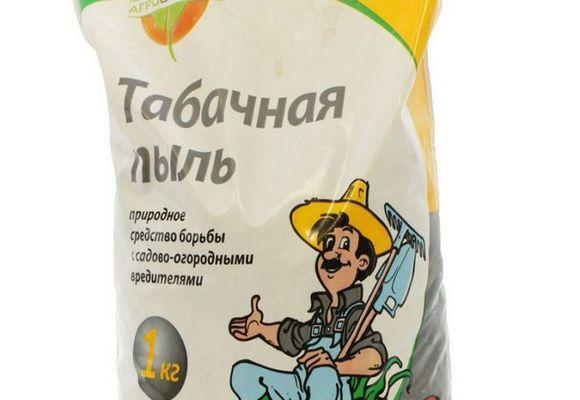

We fertilize plants with tobacco-ash
Tobacco is used in the garden as a fertilizer due to its ingredients. They increase the activity of microorganisms in the soil and have a positive effect on plants. For top dressing, it is added to the soil twice a year (in spring and autumn before digging), and as the main fertilizer - once every three years (up to 40 g / sq. M).
As a fertilizer for cultivated plants, the agent should be applied:
- before each digging of the earth (dissipate 2–4 g of dust per sq. m.), combining in autumn with potash and phosphorus preparations, in spring - with nitrogen preparations;
- before planting berry bushes, ornamental, fruit trees (0.5 kg of tobacco is placed at the bottom of the planting hole);
- before the start of arranging lawns - before sowing lawn grass, scatter the substance over the territory of the site (30-40 g / sq. m), then loosen the top layer of the earth and water abundantly;
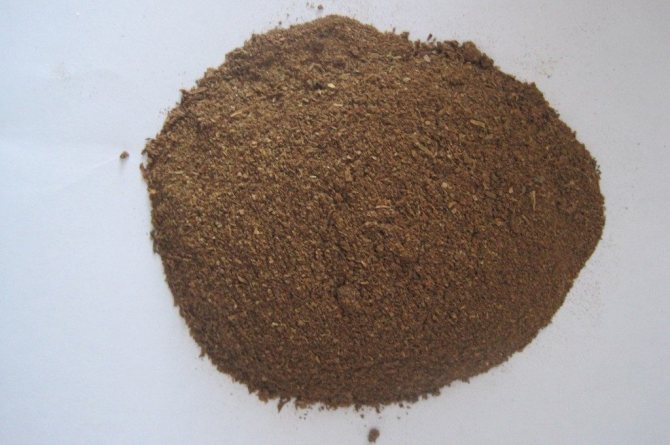

Tobacco is used in the garden as a fertilizer due to its constituents
- growing potted flowers - mix the earth with sand and tobacco dust to fill them;
- caring for spring and winter wheat varieties (4 kg per 10 sq. m of field).
Tobacco waste is rarely used in its pure form, most often it is added to mineral fertilizers (in saltpeter).
Infusion and decoction of tobacco dust
From moths, caterpillars, slugs, ticks, tincture will help. The liquid is prepared independently. It is not difficult to manufacture. In order for spraying to give a result, do it twice, observing the time interval: 1 - 2 weeks.
Infusions are allowed for processing shrubs and fruit trees. But the last time of application is planned no later than 14 days before harvesting the fruits. You can prepare an infusion of tobacco using one of the following options:
- Stir dust in water (1 in 10). Put on low heat until boiling. Boil for 30 minutes. Watch out for vapors, as the lack of fluid will need to be replenished. Remove to a cool place, well covered with a lid for a day. Then strain. We get a concentrated substance, which is additionally diluted before use in a ratio of 1: 3. Add laundry soap for better adhesion.
- Add 300 g of wood ash, tobacco dust, lime per liter of hot water. Insist for at least 10-12 hours and strain. Add liquid soap to the resulting liquid. Stir until smooth. The infusion is ready for use immediately.
- 400 g of tobacco dust is added to settled water (7-10 liters) at room temperature (at least 30 degrees). Stir and leave to infuse for 2 days. Stir throughout the entire time. After insisting, strain, add 4-5 liters of water. Mix with liquid laundry soap (5 g per liter).
Hot bitter pepper
It will rid the area of aphids and thrips, openly living small caterpillars, larvae of beetles, suckers and slugs.
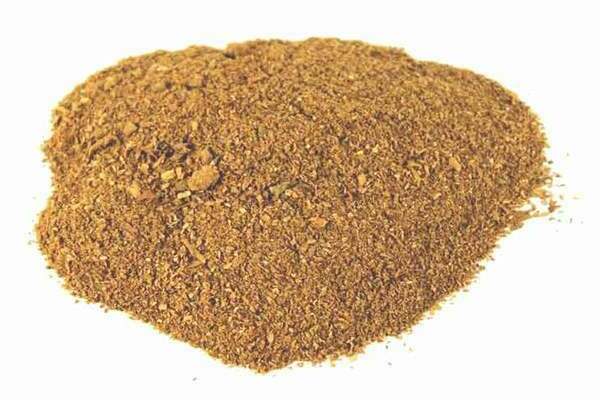

1 kg of chopped fresh pods are infused in 10 liters of water for 10 days (in an enamel bowl). Use the resulting infusion in a ratio of 100 g per 10 liters of water of the finished solution. Add 40 g of soap.
Boil 100 g of dry pods in 1 liter of water for 2 hours under a lid. Dilute to 10 liters of solution.
Boil 100 g of freshly chopped pods in 1 liter of water for 1 hour over low heat. Insist for two days in a glass container. For spraying, 50 g of the infused broth is diluted in 10 liters of water.
Spreading pepper over the soil in the aisles of redis and cabbage, they scare away blobs and cabbage fly.
Fumigation with tobacco dust
Such use of tobacco dust as fumigation in a garden plot is carried out after the appearance of ovaries. This event is not suitable for home flowers. Outdoors only. For this, a fire is made from natural materials (shavings, debris, branches, bark).
The fire is kindled in a metal container with a handle to make it easier to move around the territory. Once the fire is on, add tobacco dust. The fumigation process takes up to 2 hours. Depends on the footage. This method is applicable for greenhouses. But the event is held before planting crops, not earlier than a day.
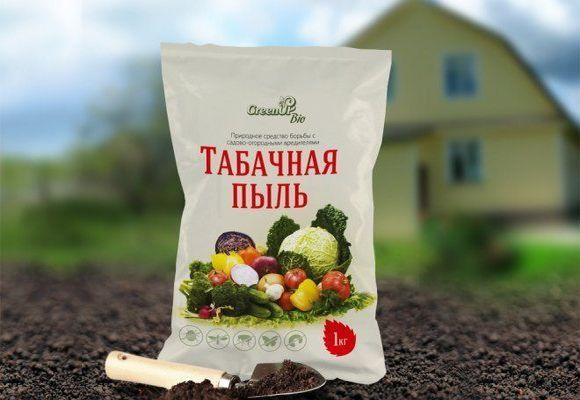

Onions and Onion Hulls
It will get rid of sucker, aphids and spider mites, scare off ants.
Insist 250 - 300 g of chopped onion together with the husk for 1-2 days in 10 liters of water. Apply immediately after straining.
Insist 150-200 g of onion husks in 10 liters of water for up to 5 days. Apply immediately after straining.
Insist 200 g of onion husk in 10 liters of warm water for a day.
Fill half of the bucket with onion husks and pour water heated to 65 ° C to the top. Insist for a day, dilute in half. Use the solution immediately after straining.
Professional gardener Anna Rostislavovna tells about getting rid of spider mites using folk methods in the next video.
Onions planted next to cabbage and cucumbers will protect the latter from slugs. There is evidence that thrips, moths and plant bugs do not like onion smell.
If you have interesting and safe recipes for dealing with
, we will be glad to publish them. It's a common matter))
Precautions
Tobacco dust is harmful and toxic if inhaled. Even a schoolchild is aware of this fact. Therefore, all work is carried out with special care, in compliance with safety rules:
- It is strictly forbidden to use household utensils for diluting, infusing mixtures, liquids.
- Processing is carried out in a protective suit.
- A respirator is required.
- After work, they take a shower, wash their hands and face well.
All clothing should be made of thick fabric, shoes to cover the ankles. Do not wash with all things. Store all tools in a separate room.
Fertilizer use
When using this drug, it is imperative that you follow the precautions. It is impossible to cook a broth based on tobacco dust in containers that are intended for cooking.
Allergy sufferers are not recommended to come into contact with tobacco dust powder. Use a gauze bandage and rubber gloves while working with this product. Masks or respirators can be used to keep the airway safe. During smoke bombs from tobacco dust, it will not be superfluous to wear a gas mask.
If a solution of tobacco dust gets on your skin, wash it thoroughly with water as soon as possible.
As for clothes while working with such a preparation, it is better to use things made of thick fabric. The upper part of the clothes must be with long sleeves. It will not be superfluous to put on some kind of cape made of plastic material, a raincoat will do.
So the risk that the solution gets on the skin will be minimal. At the same time, the shoes should not be open, high, tight-fitting the leg. As for the material, rubber or leather is best. It is imperative to cover your head. Do not store used plant treatment clothing in living rooms.
You can dust with tobacco powder both the plants themselves and the soil around them. For a more even spray, it is convenient to use a gauze bag. Having poured the agent inside, the bag is shaken over the leaves and shoots or over the ground:
- when fighting aphids, Colorado potato beetle, leafworm, thrips, leaf-gnawing caterpillars, honeydews, leaves, buds and shoots are powdered;
- when fighting ants and slugs, both leaves and soil are powdered;
- when fighting cabbage and onion flies, dust the soil.
This is a very simple method that does not require any preliminary preparation. But it has two drawbacks. Firstly, the product applied in this way works only on the surface and is washed off by the first rain. Secondly, the dense dusting of the leaves makes photosynthesis difficult. However, dry pollination can be quite effective against pests.
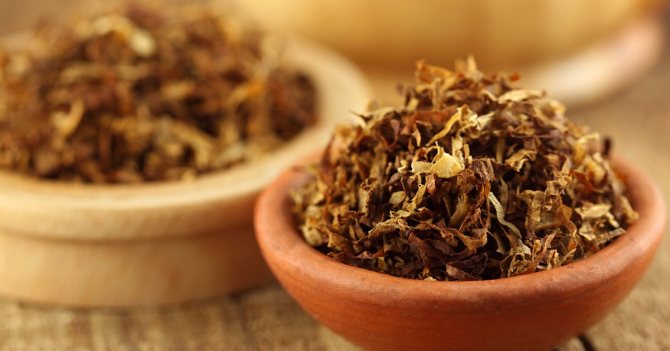

Analogs of these drugs can be made independently if you mix tobacco dust and sifted ash or mustard in equal proportions.
Tobacco dust is a material that can have a toxic effect on humans. In particular, workers in tobacco production often experience symptoms such as headache, atrophy of the nasopharyngeal mucosa, ulcers on the gums, conjunctivitis, chronic bronchitis, and high blood pressure.
Of course, a single use of tobacco powder will not cause such consequences. And yet, when working with him on the site, you must take precautions. It is imperative to protect nose and mouth from inhalation of this material. Glasses and gloves are also useful.
For bees, tobacco dust is low-hazard (III hazard class). However, this does not negate the need to comply with environmental regulations when working with drugs. Plants should be processed in the evening, when the bees have finished their flight. The next day, it is better to keep them in the hive. Wind speed when spraying tobacco dust should not exceed 3 m / s.
When adding tobacco waste to the main agricultural products, they can increase yields by 40%, improve the quality of fruits, and increase the biological activity of the soil. It has been shown to use the substance for the prevention of damage by harmful insects and the activation of beneficial bacteria.
In the garden and garden, this product is fertilized as follows:
- added to the soil during digging in the amount of 2-4 g per 1 m2;
- 500 g are applied to the bottom of the planting holes for trees and shrubs;
- before sowing the lawn, spread over the surface, followed by loosening and watering;
- before winter, mixed with potassium and phosphorus preparations;
- in spring they are used together with nitrogen supplements.
When planting home flowers, tobacco is able to protect them from parasites for a long time, but the procedure requires strict adherence to the rules:
- A bucket of soil is poured onto a strong film.
- Manually distribute tobacco evenly with a pinch in the amount of 1 teaspoon.
- Using a scoop, pour the mixture back in layers, stirring constantly.
On the garden plot, as the main top dressing, they are used once every 3 years (not more often), the norm is 40 g per 1 sq. m. It is recommended to introduce a mixture of dust with manure or chicken droppings.
Nicotine has a harmful effect on humans, therefore, when working with tobacco dust, compliance with safety rules is required:
- To prevent the suspension of tobacco dust from entering the respiratory tract, you should use a respirator or cotton-gauze mask.
- The skin of the hands is covered with mittens.
- A headgear is required to protect the hairline.
- When fumigated, it is best protected by a gas mask. Another option is to travel a sufficient distance.
- Work clothes should be long-sleeved, trousers should be worn over the shoes.
- Store work suit in a non-residential area.
- When fumigating greenhouses, you must not stay inside.
- Keep the drug in a tightly closed container.
Children must be especially protected from dust.
Tobacco-free growers appreciate tobacco as an insecticide and fertilizer. They fell in love with this product for its naturalness, availability and cheapness.
What pests are effective against
Since the use of tobacco dust involves the selective destruction of pests, it is worth clarifying which means will work. To the action of the means, namely, destruction are subject to:
- cruciferous flea. Processing is done once a month;
- slugs of all kinds, leaf rollers, silkworms, caterpillars, thrips and whiteflies. A mixture is required. Lime is added;
- spider mite. Suffice it to pollinate twice with an interval of 10 days. If necessary, repeat the procedure;
- sucker and ants;
- midges, onion fly and moth. Combine with lime and ash. You can use dusting or add when digging;
- a decoction is used for aphids. From the moth - infusion.
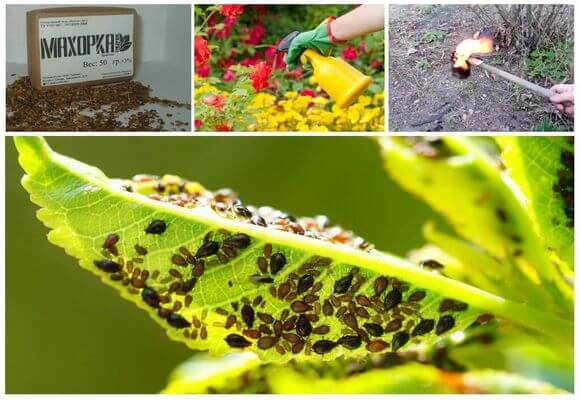

Vinegar
Helps get rid of cruciferous flea beetles.
will save you from the moth.
Add 2 tbsp. tablespoons of vinegar essence in 8 liters of water immediately before processing. Spray radish and cabbage shoots liberally.
Dilute 200 g of apple cider vinegar, fermented for 3-4 days, with 3 liters of water.
How to use it?
At a height of 1.5-2 m, hang such jars with such a solution on the branches of the apple tree. The apple moth is collected in jars. Change traps once a week.
The main characteristics of the drug
Tobacco dust is biologically pure material. It does not contain pathogens. Also, weed seeds are completely absent in its composition. It is considered extremely safe.
In the process of using this product, harmful substances do not accumulate in the soil. It contains easily mineralizable forms of macroelements: nitrogen, phosphorus and potassium. Together, they can improve plant nutrition, regardless of their species. Such a tool has a beneficial effect on the soil, improving its physico-biological and agrochemical properties.

